Tilde House brings a listed London home up to contemporary, sustainable standards
Tilde House by Neil Dusheiko Architects blends Victorian elegance, sustainability and contemporary flair in north London’s historic Canonbury area
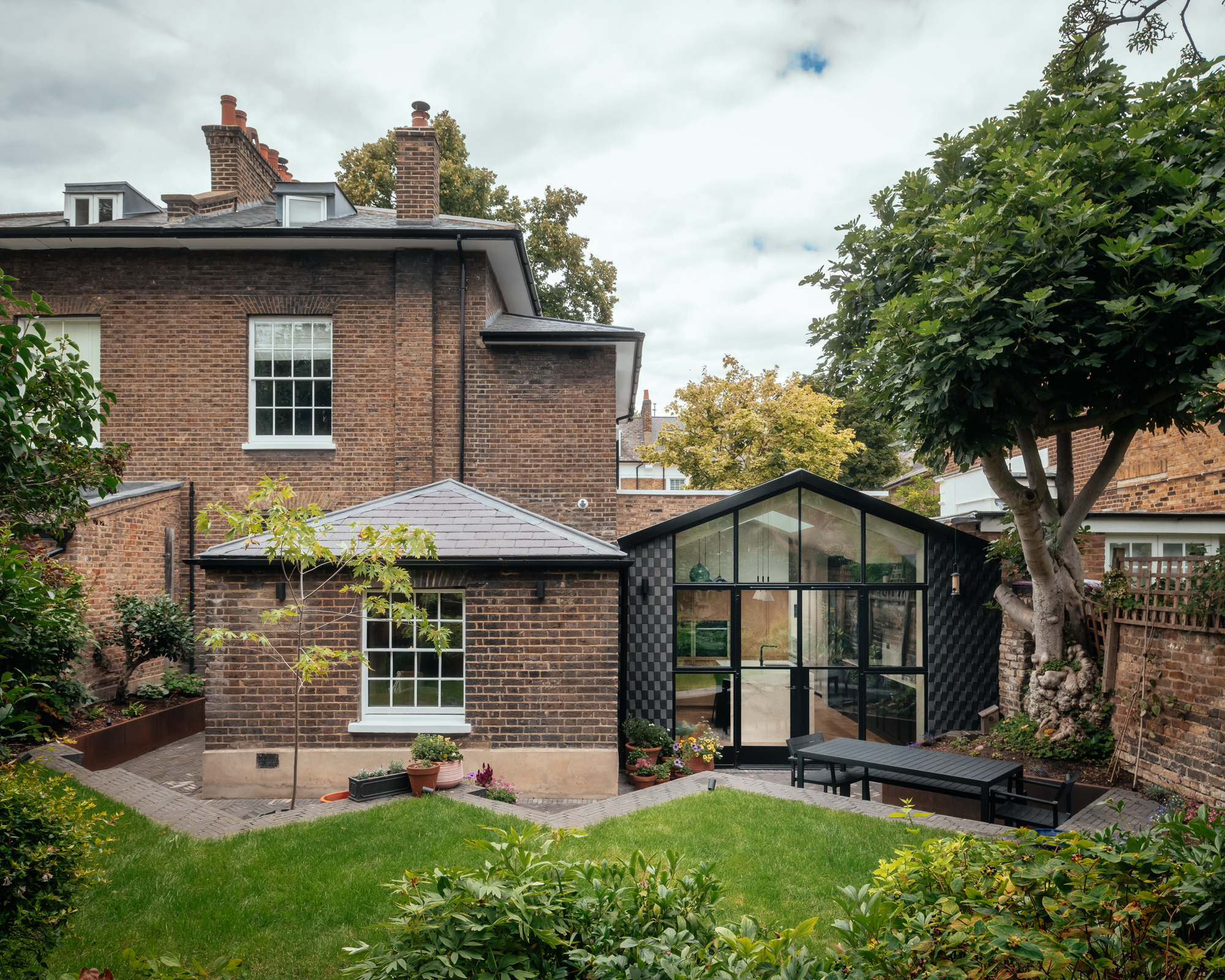
Tilde House's London neighbourhood, Canonbury in Islington, a conservation area since the 1960s, is a leafy district developed in the late 18th and early 19th centuries around a Tudor tower once part of an Elizabethan manor house. Its streets are lined with semi-detached mid-Victorian villas, many with big gardens and views of the New River park.
Among them, Tilde House is a Grade II-listed property, and has recently been remodelled and extended by Neil Dusheiko Architects, the practice behind such projects as north London's Tree View House , a light-filled mews house renovation in Bayswater, and the Sun Slice House family home in Cambridge .
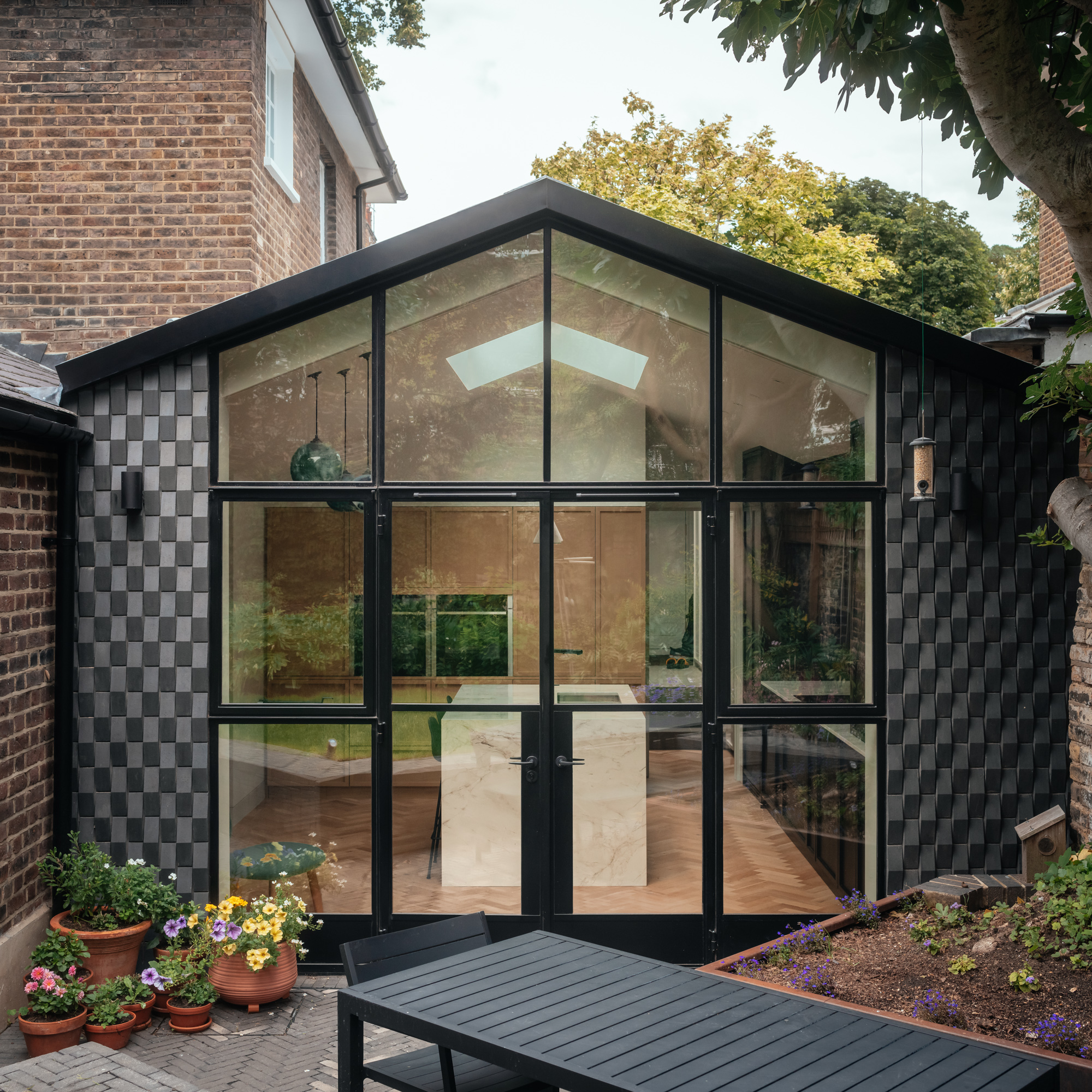
Tour Tilde House by Neil Dusheiko Architects
With deep roots in the neighbourhood, the Canonbury Yard-based architects were the perfect candidates for a brief that required both a complete architectural transformation and the safeguarding of the property’s essence and heritage.
Built in the early 1840s, the villa is listed in part because of its elegant neo-classical detailing. This, of course, has been left untouched, which is why from the street you’d be forgiven for thinking that the property is no different from its period neighbours.
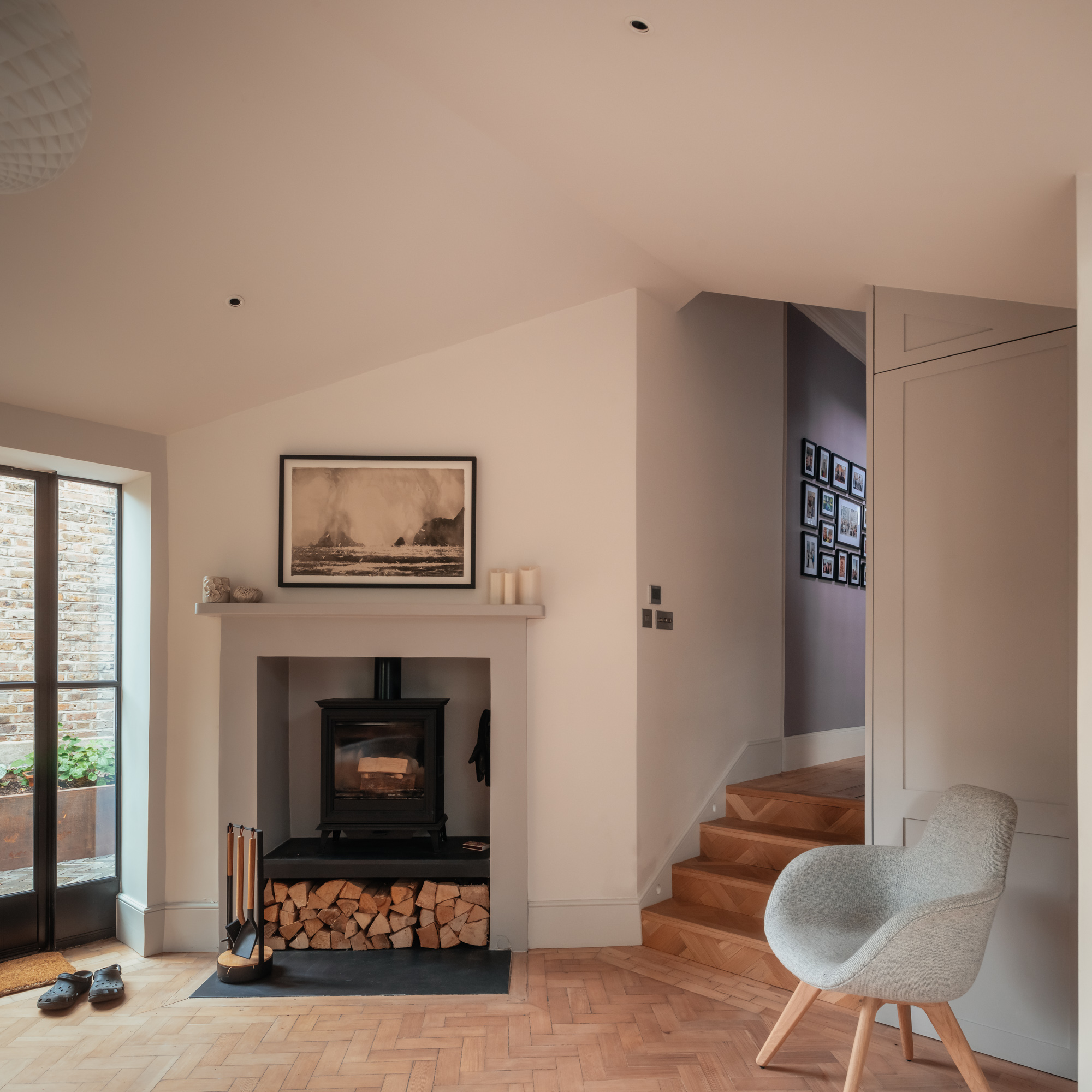
Step inside, though, and the interiors, once dark, dated and cramped, have been transformed into elegant spaces that lead to a new extension containing a bespoke kitchen. Replacing a shabby 1980s blockwork addition, the bespoke kitchen extension, built along the same foundation lines using recycled materials from the original, features a full-height glazed screen that opens onto the garden.
It is framed by dark saw-tooth bricks laid in a vertical basket-weave pattern to provide a tonal and textural contrast with the original house. This motif continues in the herringbone flooring and paving that flows through the kitchen and into the garden beyond, stitching old and new together.
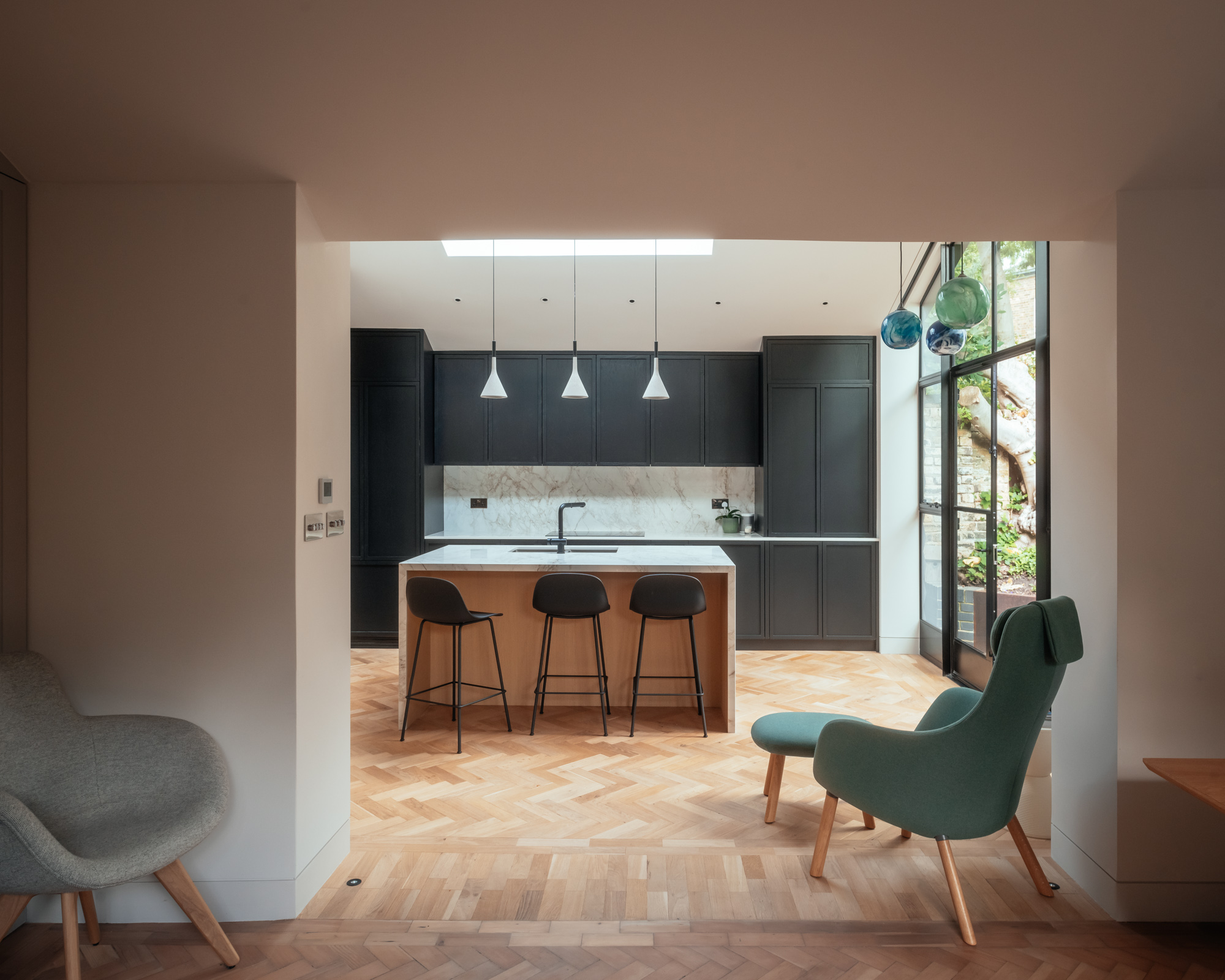
Bringing a 178-year-old Grade II-listed house up to current standards was not without its challenges, especially in terms of technical aspects and structural repairs. Working with local conservation officers, the architects were allowed to remove exposed pipework throughout the house, and incorporate an ensuite bathroom beneath the listed staircase.
Receive our daily digest of inspiration, escapism and design stories from around the world direct to your inbox.
‘Very much of the original house is kept intact and celebrated, so what we have added is quite hidden,’ explains Neil Dusheiko. ‘We were able to remove the existing rotten timber structure to the original single-storey outrigger and this allowed us to re-insulate and re-tile the existing roof.’
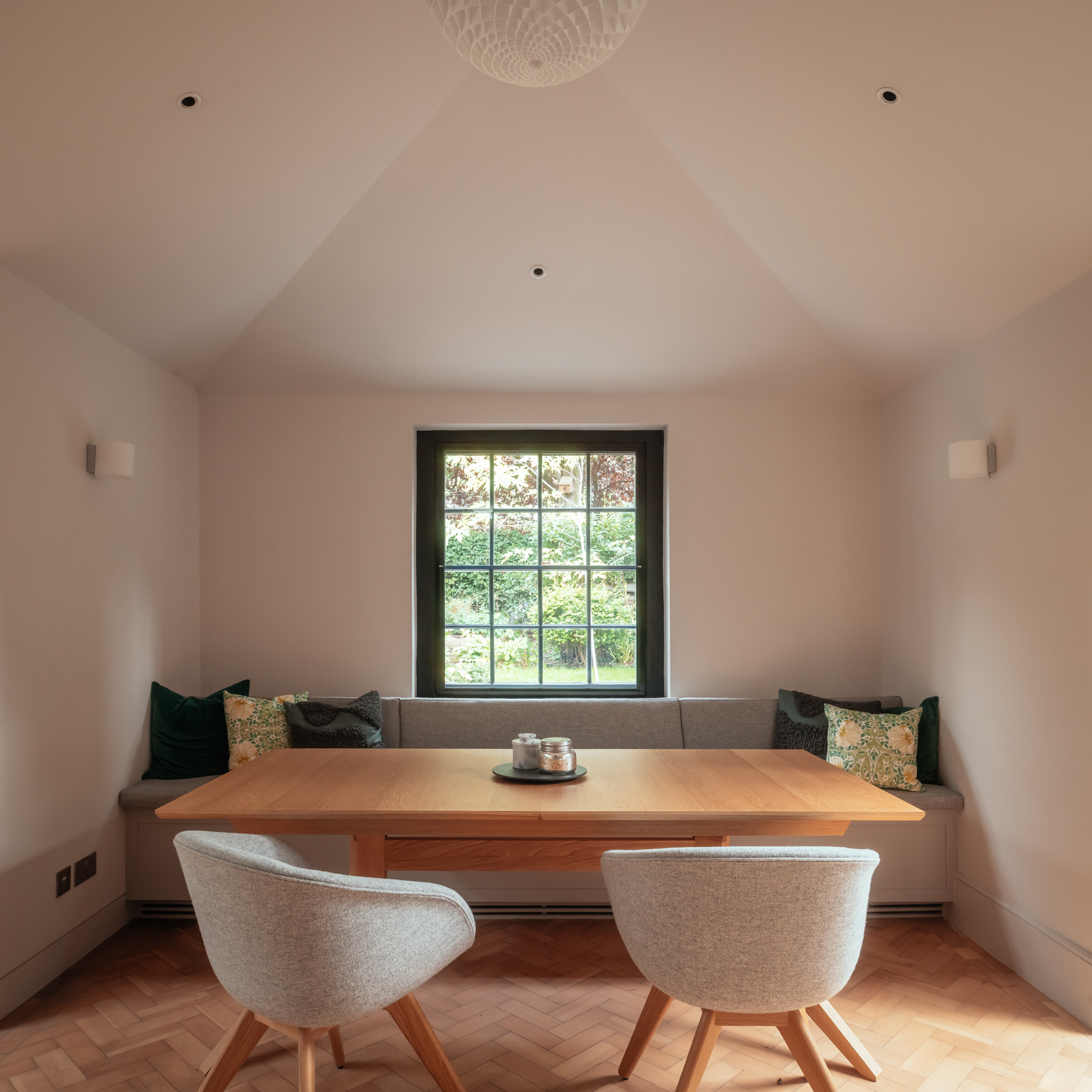
Historic homes are notoriously draughty, but the existing windows could not be upgraded, leading the team to install a secondary glazing. To improve the building’s thermal performance, they also sealed gaps around doors, windows and floorboards, and installed draft excluders on doors and windows.
‘Due to the absence of historic features in the dining space we were allowed to insulate the walls and so the linking space, containing the kitchen and dining room, is well insulated, reducing the need for too much heating,’ says Dusheiko.
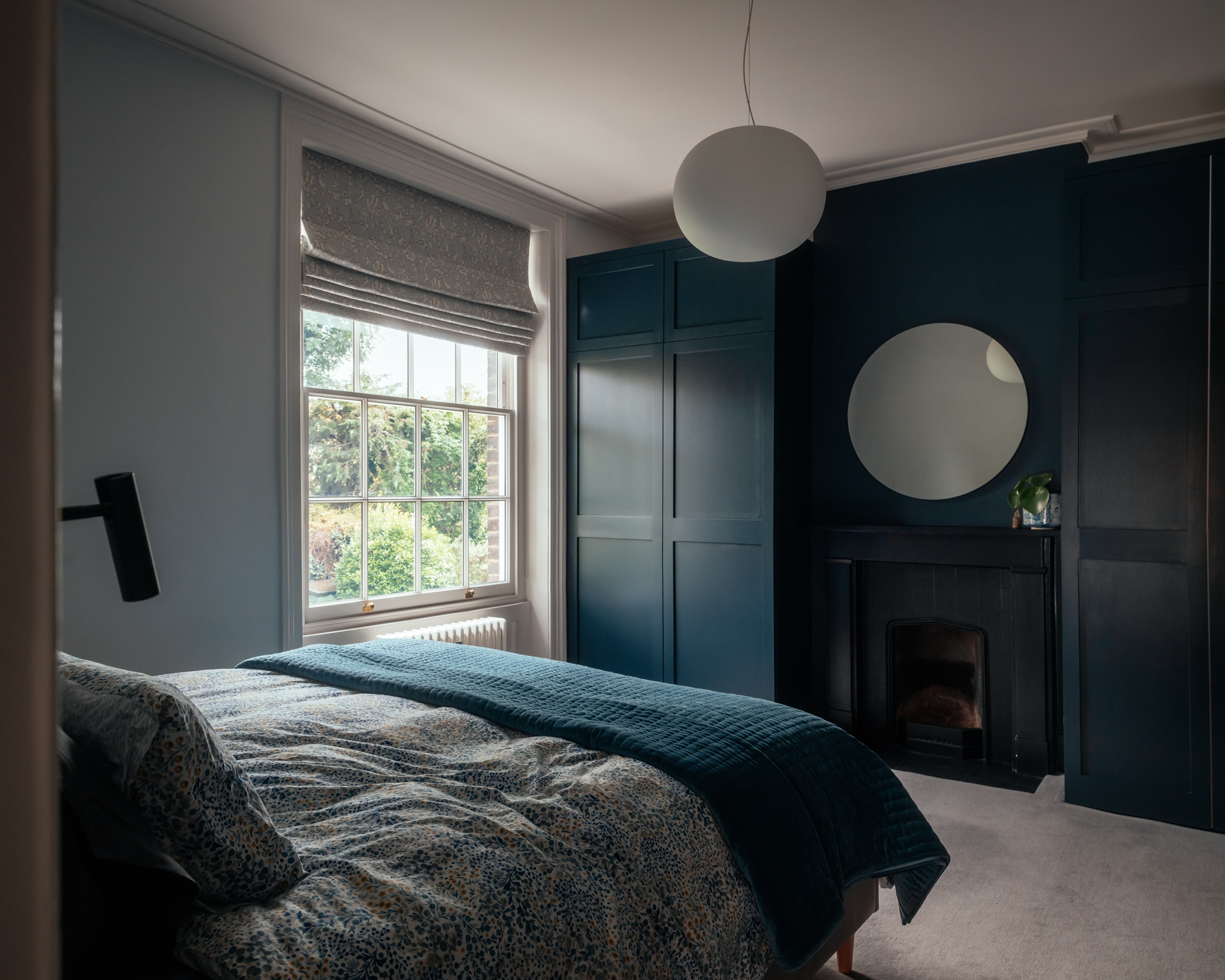
Acting as a bridge between the original house, the contemporary extension and the garden, the dining room inspired a distinctive pleated roof design that folds and unfolds over the dining area and the kitchen.
Upstairs, new ensuite bathrooms are cleverly concealed behind crisp new joinery, painted in rich dark tones that change with shifting light throughout the day, and complementing retained and restored period features.
Léa Teuscher is a Sub-Editor at Wallpaper*. A former travel writer and production editor, she joined the magazine over a decade ago, and has been sprucing up copy and attempting to write clever headlines ever since. Having spent her childhood hopping between continents and cultures, she’s a fan of all things travel, art and architecture. She has written three Wallpaper* City Guides on Geneva, Strasbourg and Basel.
-
 A Brasília apartment harnesses the power of optical illusion
A Brasília apartment harnesses the power of optical illusionCoDa Arquitetura’s Moiré apartment in the Brazilian capital uses smart materials to create visual contrast and an artful welcome
-
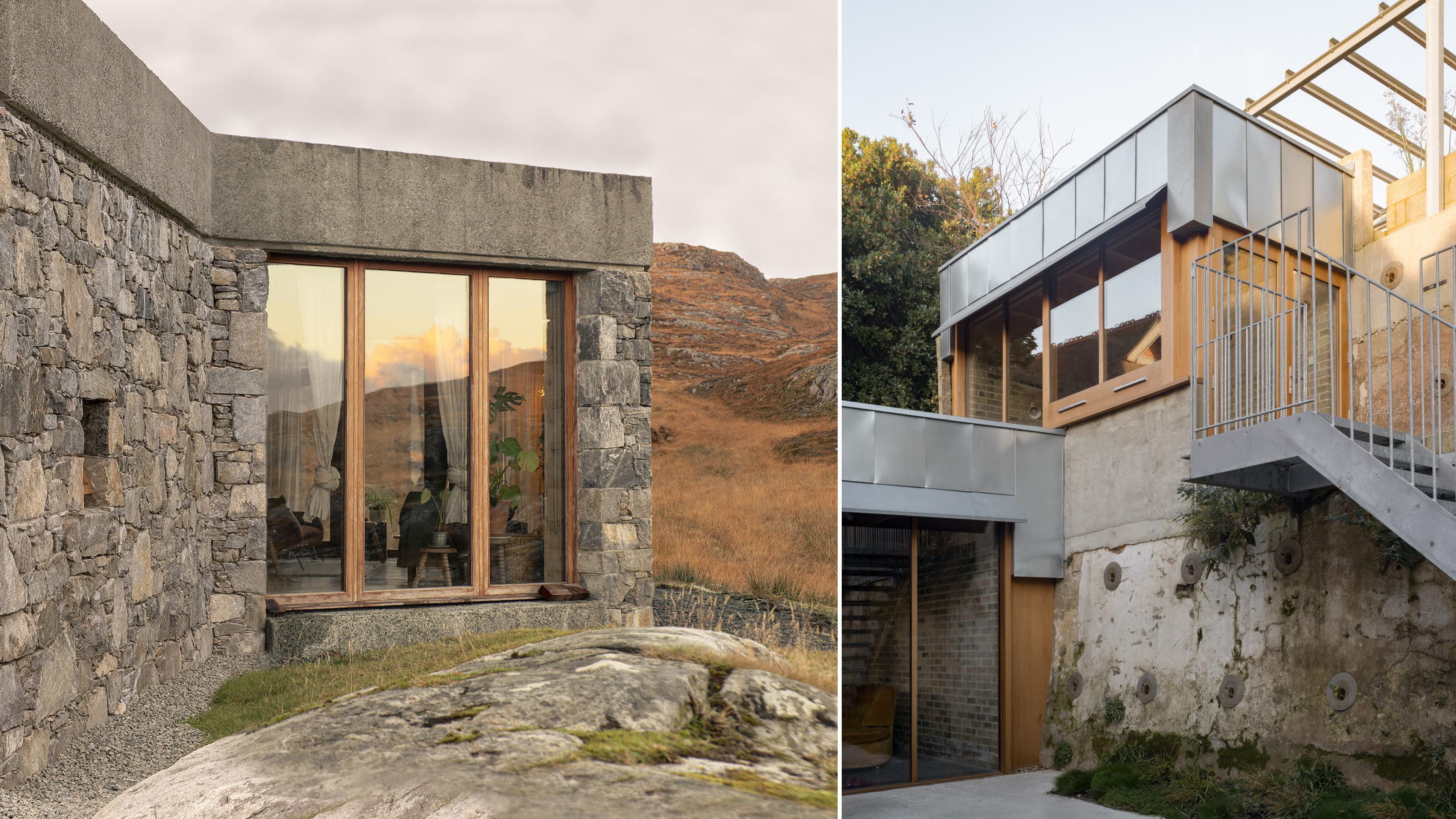 RIBA reveals the first pair of shortlisted structures for the House of the Year 2025
RIBA reveals the first pair of shortlisted structures for the House of the Year 2025Six practices are up for the award, which will be announced on Grand Designs in December. The first two houses, by Izat Arundell and Hugh Strange Architects are previewed below
-
 The Wallpaper* gift guide for the travel obsessed
The Wallpaper* gift guide for the travel obsessedConstant wanderlust is a surprisingly useful trait when it comes to gifting. Explore what to gift the discerning globetrotter
-
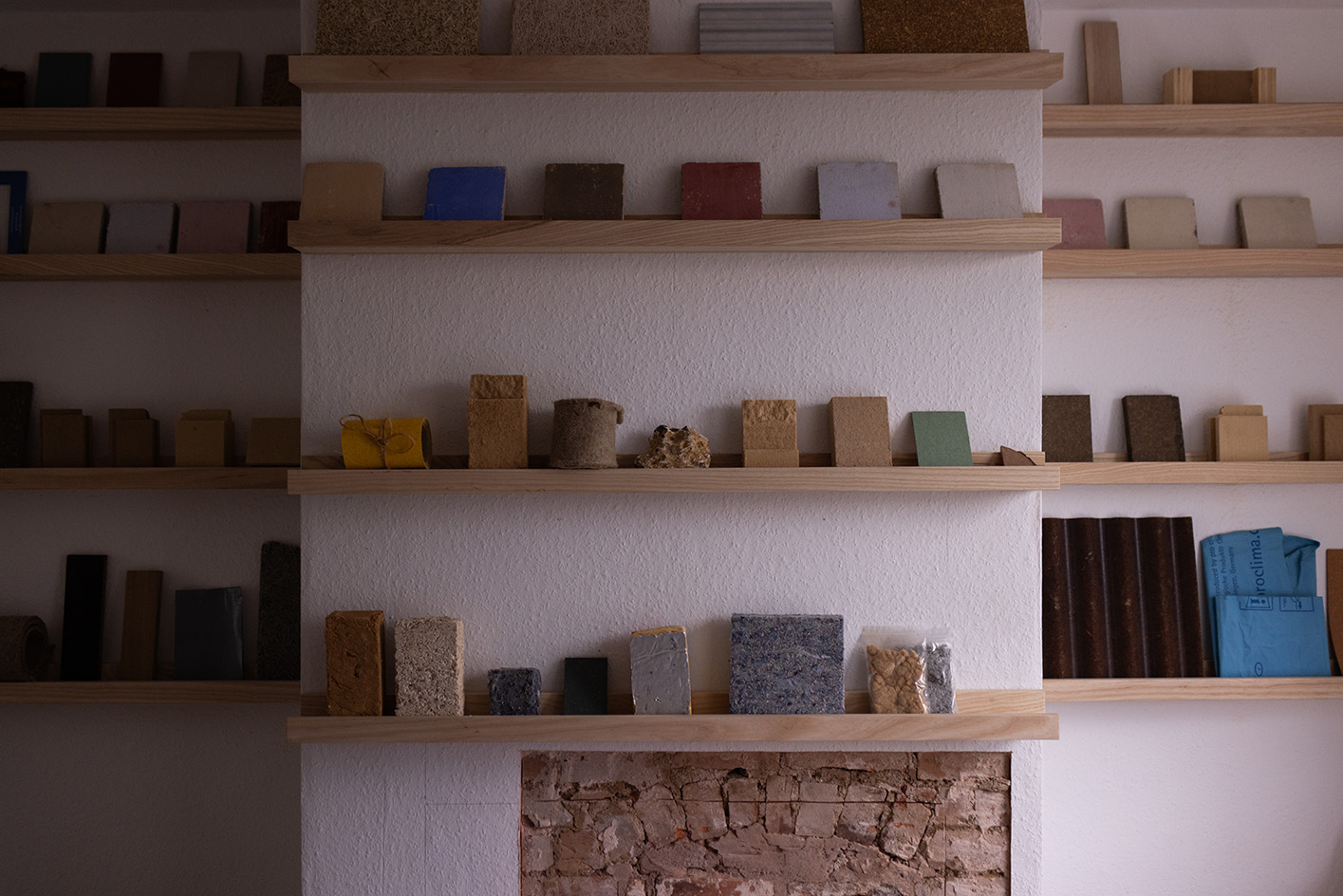 Take a tour of Retrofit House, the live showcase inspiring sustainable homebuilding
Take a tour of Retrofit House, the live showcase inspiring sustainable homebuildingRetrofit House, a showcase for residential redesign using biomaterials and environmentally smart methods, opens in Birmingham, UK, spearheaded by Civic Square, Dark Matter Labs and Material Cultures; we paid it a visit
-
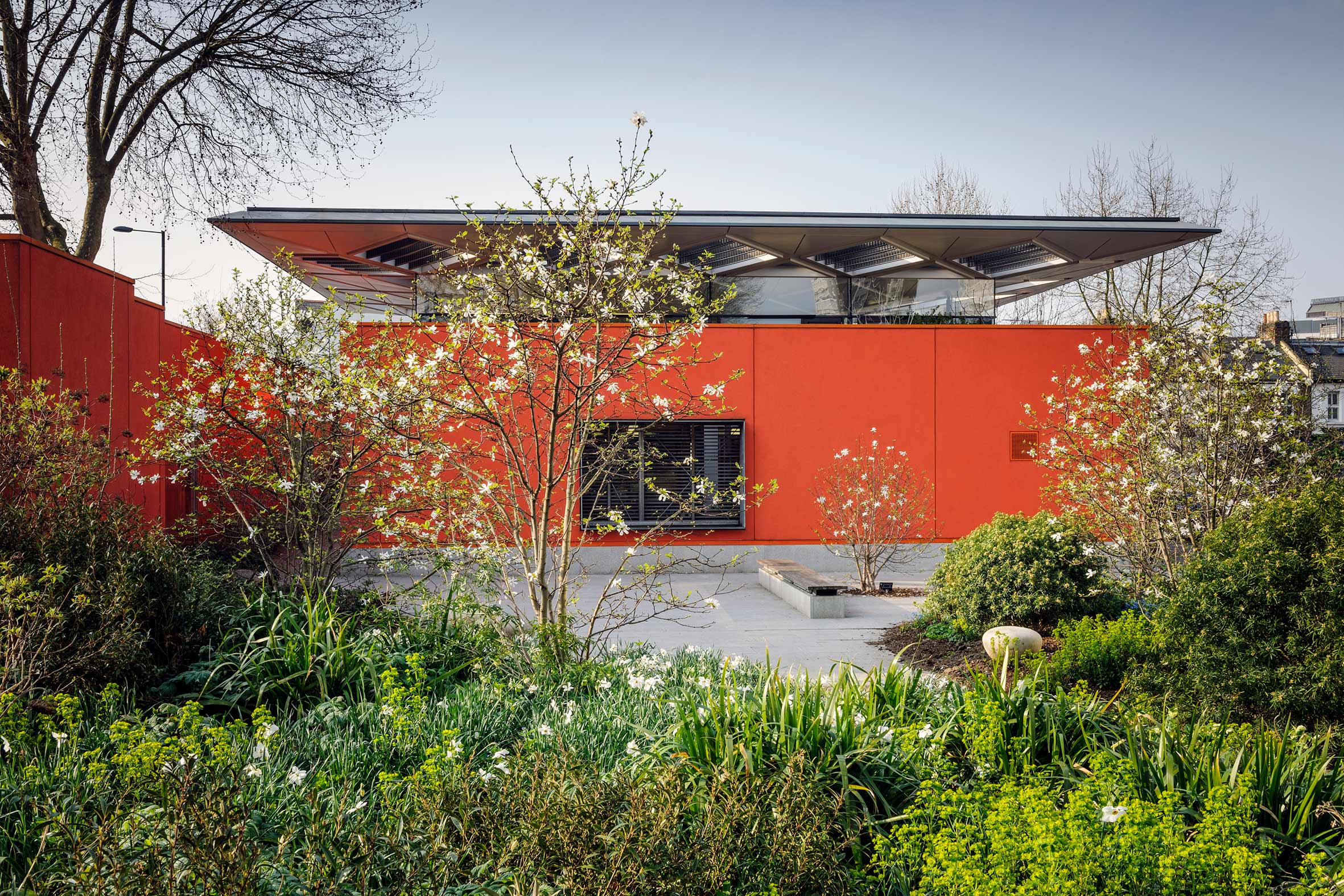 How Maggie’s is redefining cancer care through gardens designed for healing, soothing and liberating
How Maggie’s is redefining cancer care through gardens designed for healing, soothing and liberatingCancer support charity Maggie’s has worked with some of garden design’s most celebrated figures; as it turns 30 next year, advancing upon its goal of ‘30 centres by 30’, we look at the integral role Maggie’s gardens play in nurturing and supporting its users
-
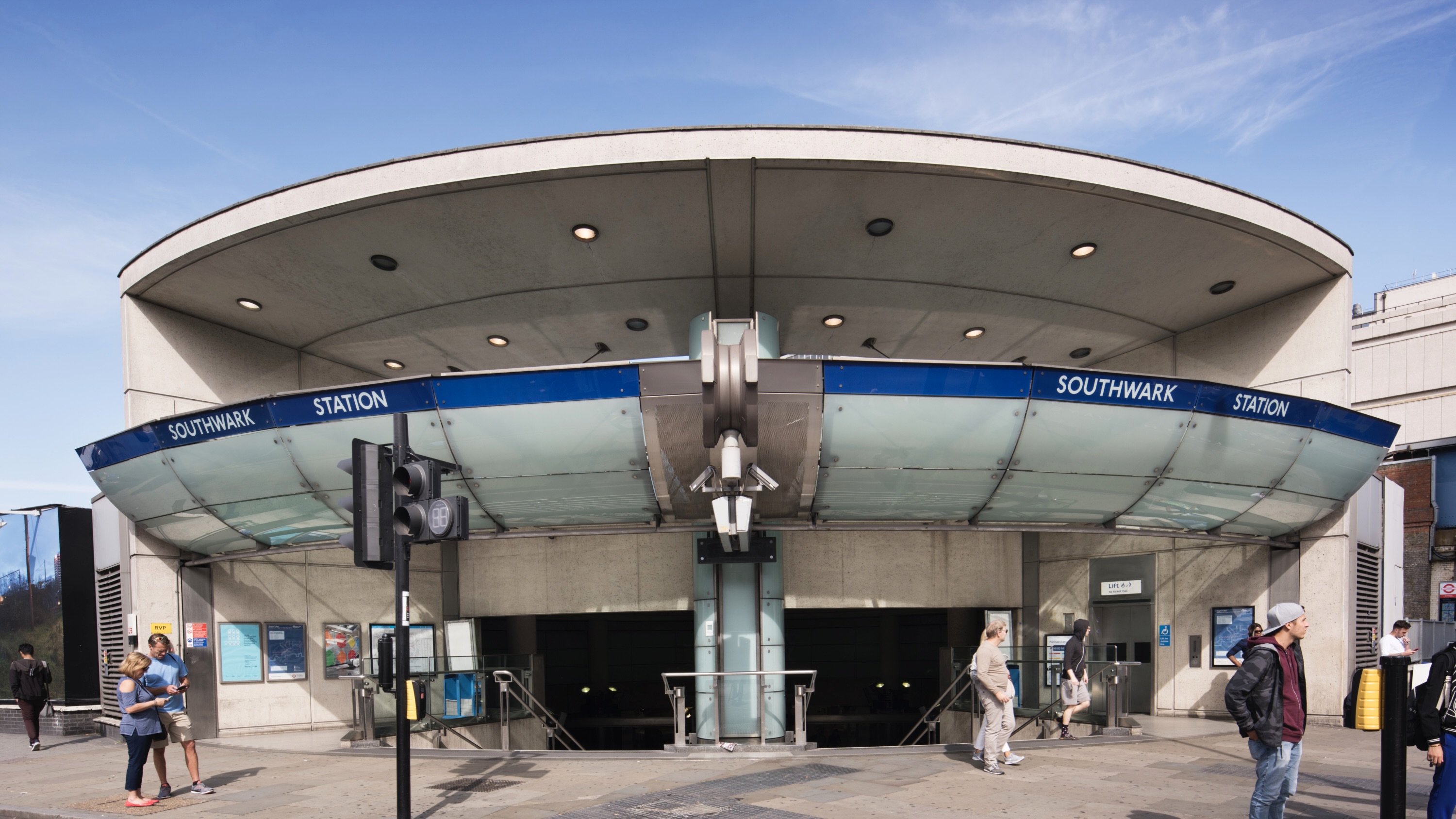 Futuristic-feeling Southwark Tube Station has been granted Grade II-listed status
Futuristic-feeling Southwark Tube Station has been granted Grade II-listed statusCelebrated as an iconic piece of late 20th-century design, the station has been added to England’s National Heritage List
-
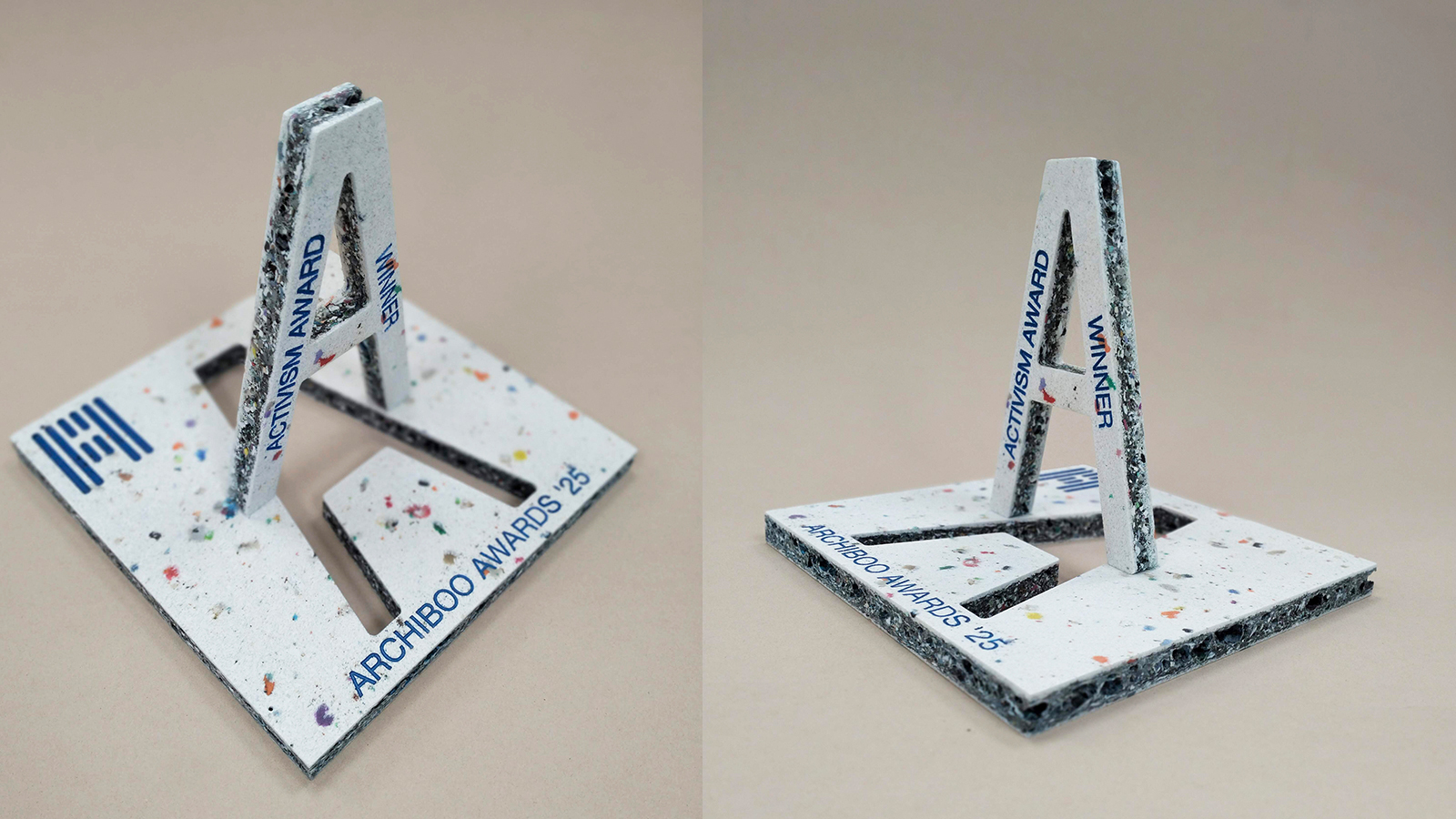 Archiboo Awards 2025 revealed, including prizes for architecture activism and use of AI
Archiboo Awards 2025 revealed, including prizes for architecture activism and use of AIArchiboo Awards 2025 are announced, highlighting Narrative Practice as winners of the Activism in architecture category this year, among several other accolades
-
 Backstage at the Old Vic is all about light, theatre and sustainable action
Backstage at the Old Vic is all about light, theatre and sustainable actionThe theatre's new creative hub by Haworth Tompkins has completed, bringing a distinctly contemporary and colourful addition to the popular theatre space in South London
-
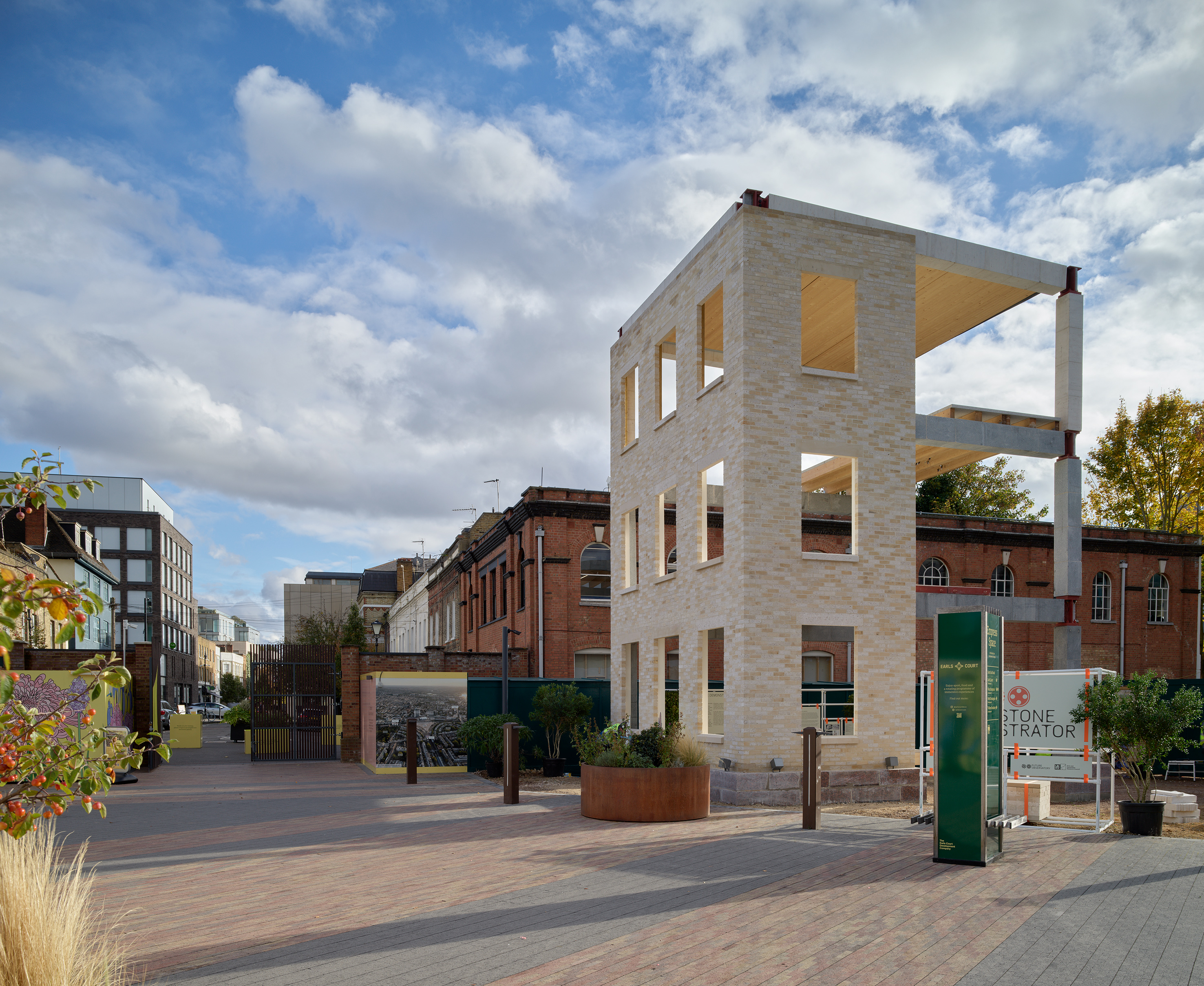 Tempted to try building with stone? This project will convince you of its merits
Tempted to try building with stone? This project will convince you of its meritsWelcome to the Future Observatory's The Stone Demonstrator, a project conceived to show off the material's strong points, now on display in West London
-
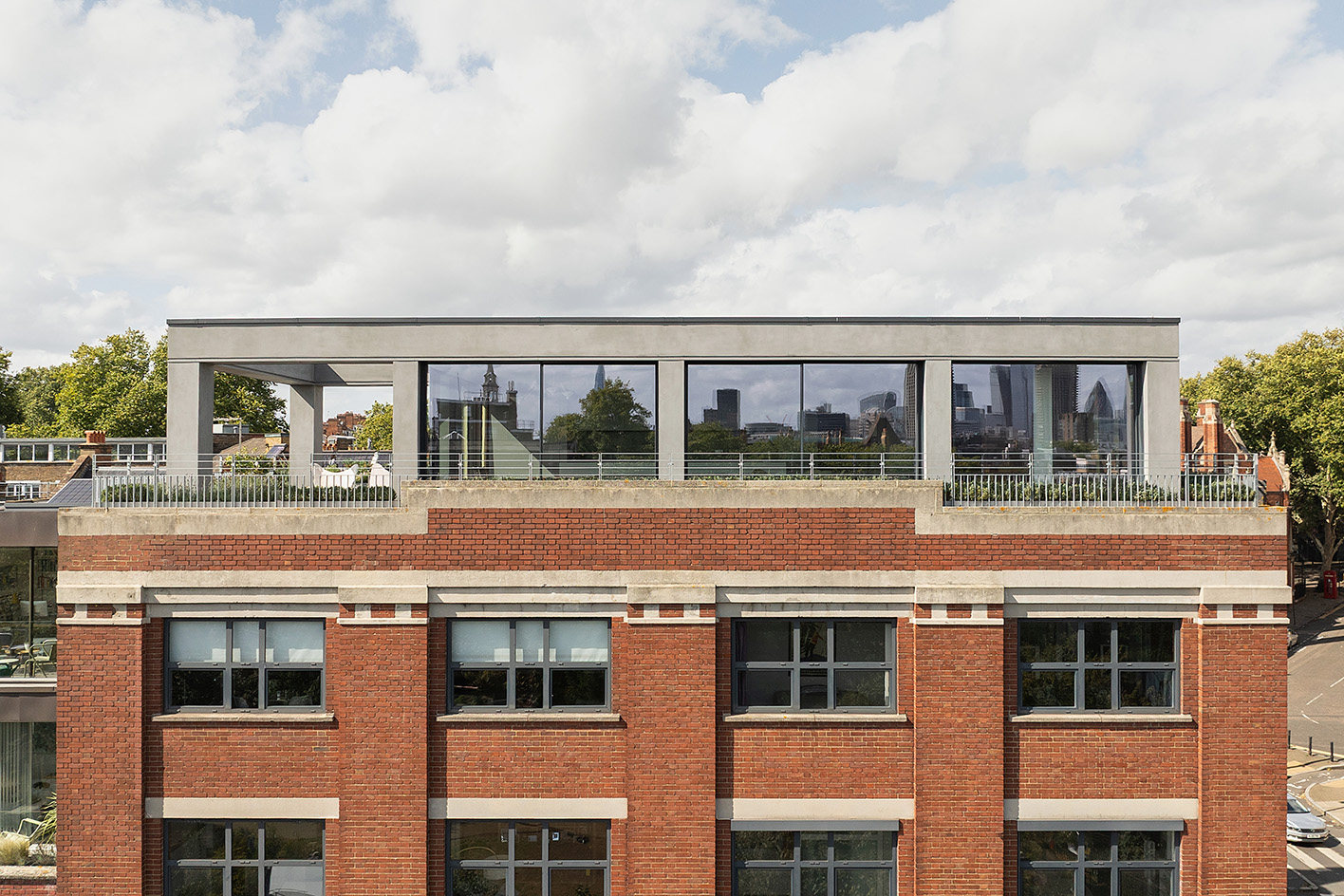 Step inside this Clerkenwell Rooftop, transformed into a minimalist urban abode
Step inside this Clerkenwell Rooftop, transformed into a minimalist urban abodeA Clerkenwell Rooftop has been transformed by Studio Felicity Bell into a minimalist modern home, featuring airy interiors and long views of London
-
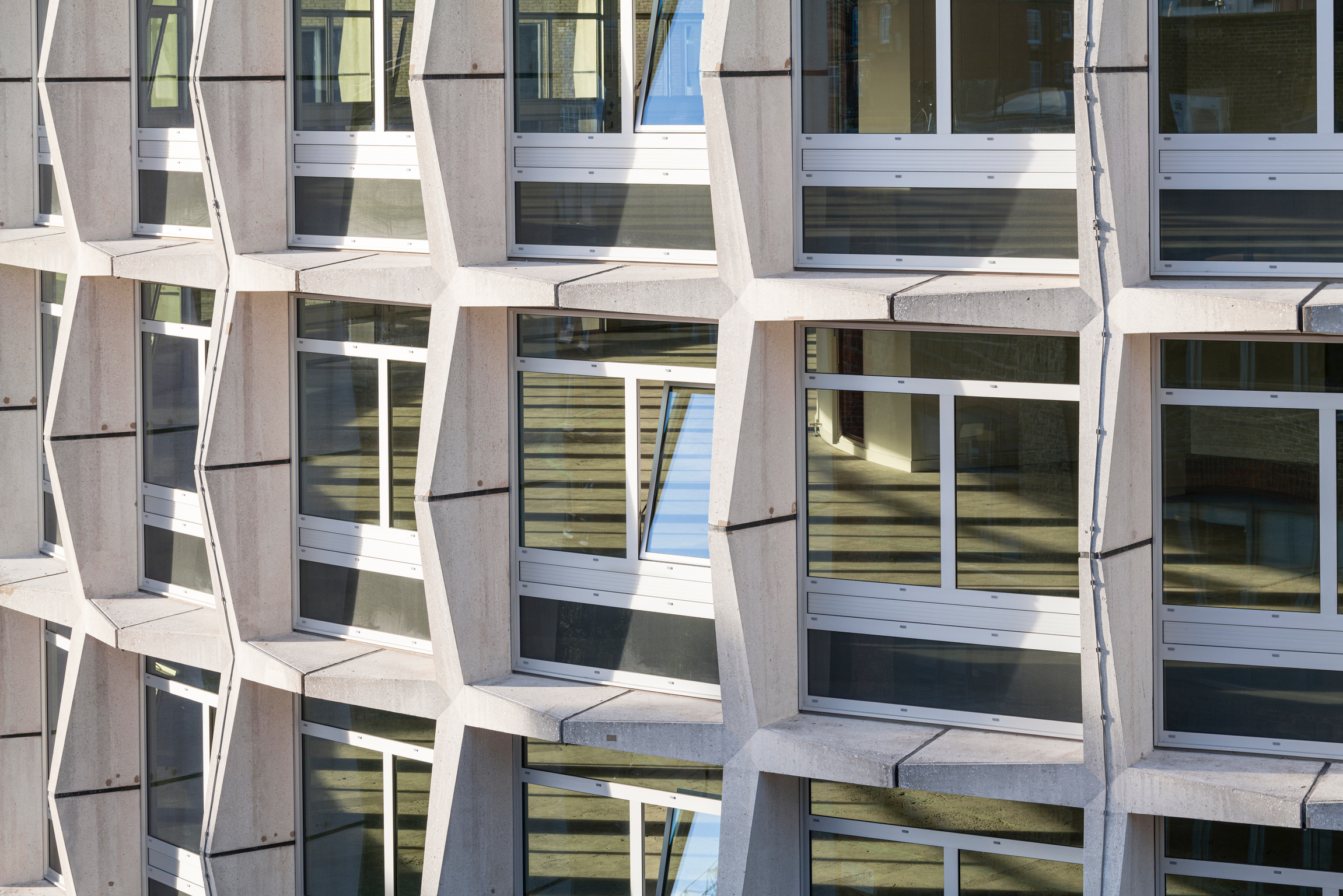 Richard Seifert's London: 'Urban, modern and bombastically brutalist'
Richard Seifert's London: 'Urban, modern and bombastically brutalist'London is full of Richard Seifert buildings, sprinkled with the 20th-century architect's magic and uncompromising style; here, we explore his prolific and, at times, controversial career